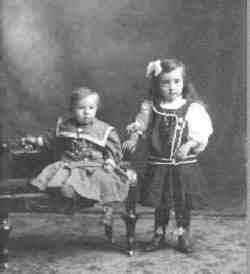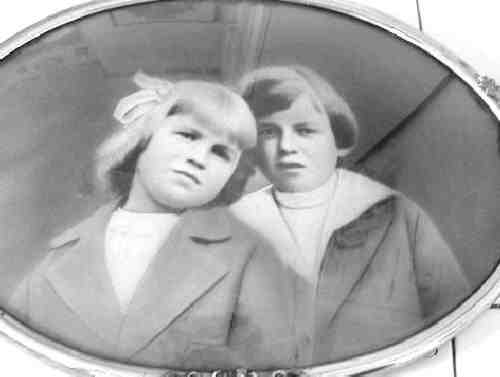
Figure 1.--The child on the left is a boy. The child on the right is probably a girl as boys did not wear sleevless tunics.


Figure 1.--The child on the left is a boy. The child on the right is probably a girl as boys did not wear sleevless tunics. |
Some of the hairbow images are very difficult to interpret. The hairbows and long hair make the children look much like girls to modern eyes. Many boys wore long curls in the late 19th century, but hair bows were less common, particularly in America. Enough photographic images exist, however, to demonstrate that many boys did wear hair bows--at least for formal photographs. The challenge od identifying gender in these photographs is daunting. Often the clothing or props are ambiguous. Have a look at these difficult images and let me know if you have any insights. HBC has loaded some images here that we need help in assessing. Other images we believe we have identified the gender, but thought readers might find the analytical process instructive.
This photograph shows two childen and was probably taken in the early 1900s. The younger child on the left in a dress is definitely a boy. The hair is not a good indicator as he is probably too young to grow long hair. The child on the right with long hair and a hair bow is probably a girl, but it is difficult to tell. Boys at the turn of the century commonly wore tunics. Often their tunics had belts and front buttons as part of the styling. The child's tunic, however, is sleeveless. Almost all boys' tunics HBC has noted had sleeves. Thus I would assume this child is a girl. Also I do not note knickers under the tunic and all but the youngest boys in tunics normally wore knickers that showed inder their tunics.

Figure 2.--This figure is more difficult. The child on the left could be a girl, but the jacket with lapels strongly suggests it is a boy. |
Figure 2 is more difficult. The child on the right has longish hair which just covers his ear. He almost cerainly is a boy. The facial characteristics, plainly styled sailor suit, as well as the hair style strongly suggest a boy. Befitting his age, he does not wear a hair bow, unlike what HBC believes to be his youbnger brother. Strangely his sailor suit has lapels. The child on the left is more difficult to assess. The child has Ditch boy bangs with long uncurl hair at the side, well over his ears, and worn with a hairbow. Dutch boys bangs are a hair style that would be more commonly, but not exclusively, worn by a boy than a girl. It could be a girl, but the the facial characteristics and plain suit suggest a boy. The jacket with lapels in particular strongly suggests that the child is a boy. The longer hair and bow are mother's way, despite the similar outfits, of indicating the older and younger brother.
We found this family portrait difficult to assess. It is an American image, probably taken about 1910. In part we can not see the middle child's entire outfit and thus it is not real clear what the child is wearing. My
best guess is a sailor tunic. I am, however, still not real certain if girls wore
sailor tunics in America. Rgey seem to have been primarily a boy's garment in Europe. I'm not sure, however, to what extent this was the case in America. I'm tempted to say the child is a girl, but without any certainty. Also we think that the double hair bows were more common for girls.
Navigate the Boys' Historical Clothing Web Site:
[Return to the Main hair bow page]
[Return to the Main bow page]
[Introduction]
[Activities]
[Biographies]
[Chronology]
[Clothing styles]
[Countries]
[Topics]
[Bibliographies]
[Contributions]
[FAQs]
[Glossaries]
[Satellite sites]
[Tools]
[Boys' Clothing Home]
